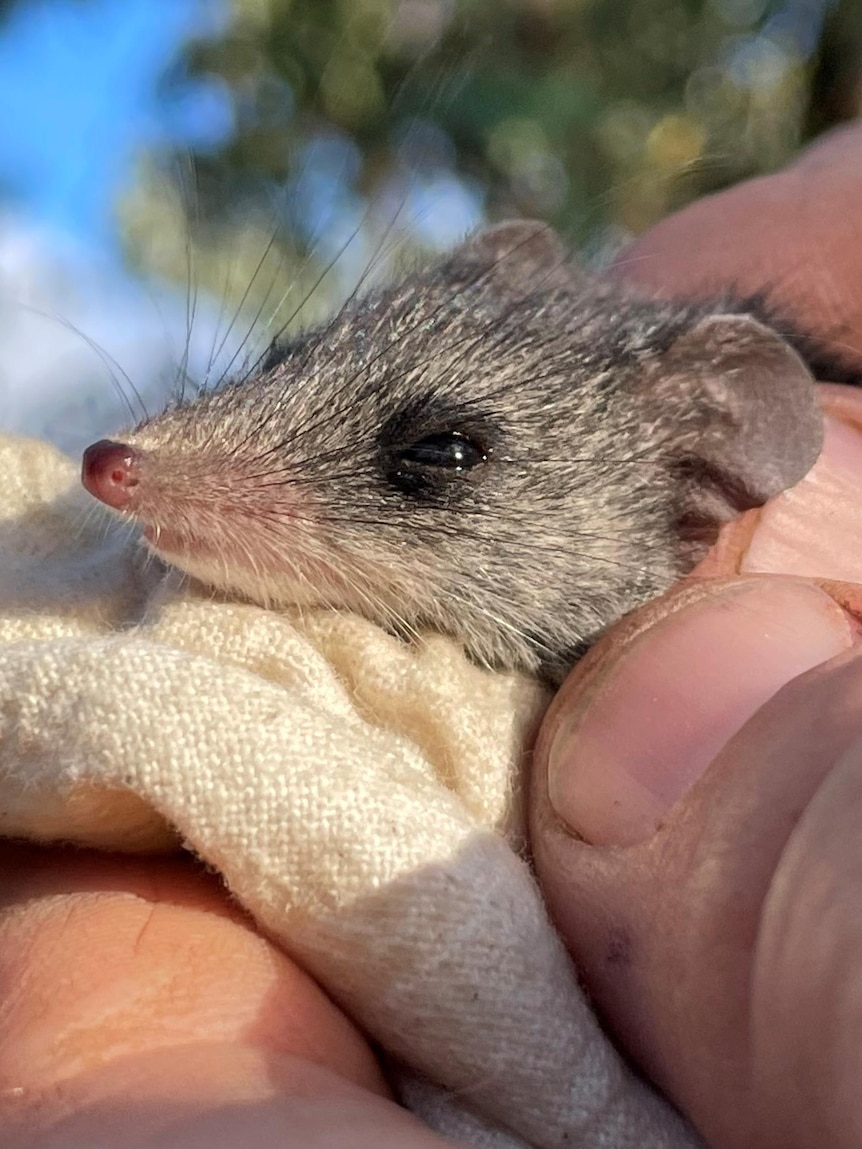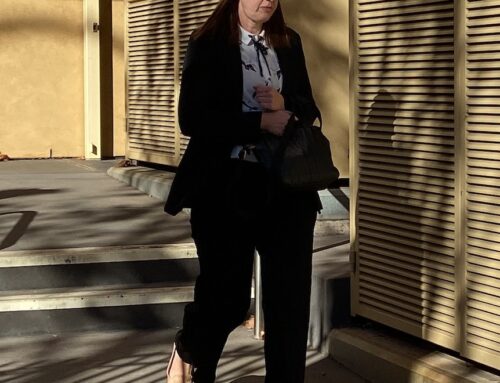Kangaroo Island’s endangered dunnarts took a huge hit after the Black Summer bushfires tore through 98 per cent of their habitat.
Now researchers are fighting to stop feral cats from driving the final nail in the coffin for the survival of the species.
Key points:
- Eight per cent of trapped cats had endangered dunnarts in their stomach contents
- Almost all the dunnarts’ habitat was hit by bushfires
- New technology makes wiping out Kangaroo Island’s feral cats a possibility
A study of the stomach contents of cats trapped on the island in the months following the fires found the remains of eight dunnarts from the 86 cats sampled, according to a study published in Scientific Reports today.
While eight may not sound like a huge number, a cat’s digestion time is in the range of about 24 to 36 hours, according to study co-author Louis Lignereux from the University of Adelaide.
“We have to see that as a screenshot basically, because from the mouth of the cat to the other end takes about 24 hours,” Dr Lignereux said.
Before the fires, the population of dunnart on the island was estimated to be around 500.
However, because of their small size and shy nature, the animals are notoriously difficult to find, according to study lead author Pat Hodgens, a fauna ecologist with Terrain Ecology.
“They’re a very cryptic species that are very difficult to study,” Mr Hodgens said.
“Before the fires … not a lot was known about them.”
A total of 263 different prey items were found in the cats’ stomachs altogether, including an endangered southern brown bandicoot.
‘Like a battleground’ as cats closed in
While it was suspected, it had not been previously confirmed that cats were preying on the dunnarts, Mr Hodgens said.
“We know enough about feral cats and native mammals across Australia that any interaction they have is probably not going to be a positive one.”
Based on that suspicion, Mr Hodgens moved in soon after the bushfires to try to capture and remove as many feral cats as possible from the only known dunnart habitats at the western end of the island.
He said cats were also closing in on the area, in a situation he described as “like a battleground”.
“Threatened species were trying to survive and also the feral cats were trying to survive because they couldn’t get enough food [after the fires].
“So we started trying to remove the feral cats [and] with the first analysis we did we were shocked.
The findings show how the devastating, cumulative impacts of extreme bushfires go on long after the blazes are put out, Dr Lignereux said.
“The cats that are already there, they’re just killing the last remaining dunnart in the refuge areas after the fire.”
Can cats be eradicated for good?
Previous estimates of how many cats are on the island have ranged from about 1,000 up to about 5,000, but cat numbers are also difficult to assess.
Based on what he found during his capturing efforts, Mr Hodgens thinks previous estimates were low.
“There was an estimate of between 1,000 and 2,000 cats, but we know that was an underestimate. On the western end they took out several hundred alone.”
Loading
“The number of cats we’ve been trapping has been staggering and they’re in really good health as well.”
As well as removing cats, Mr Hodgens worked with local private landholders, the Australian Wildlife Conservancy, and the Kangaroo Island Land for Wildlife to build a cat-exclusion enclosure over some of the remaining dunnart habitat after the fires.
He thinks that has gone a long way to helping endangered species in the aftermath.
The enclosure, known as the Western River Refuge, is a 369-hectare “predator-free refuge”.
Meanwhile, cat eradication programs have been operating on the island for years, and right now there are four projects happening in different areas.
In 2016, the federal government introduced a plan to eradicate all feral cats from the island within 15 years.
While that won’t happen, James Smith, who is the project leader for feral cat eradication with the Kangaroo Island Landscape Board, says he thinks it’s a long-term possibility.
Mr Smith’s operation had already removed cats from about 65 per cent of the Dudley Peninsula in the island’s east, and he said they’re on track to clear the entire 384 square-kilometre peninsula by 2025.
Given the success of their operation, and with the fire having knocked out a large number of cats, he said it made sense to push for total eradication.
“So much work has been done, so much [of the cat population] has been knocked down by the fire, there’s been so much work on the east and the west, so why don’t we just keep going across the whole island?” Mr Smith said.
If they were to succeed, it would be the largest island in the world to have ever been cleared of cats.
But advances in cat monitoring and trapping technology means cat eradication is getting a lot less labour intensive.
Rather than checking cage traps every day, alerts can be sent to a phone or computer once an animal becomes trapped.
And motion-detection cameras can send an image straight to a mobile device as soon as a cat walks in front of the sensor.
“[Wiping out cats is] much more feasible than it was three years ago because of those advances,” he said.
“You have to have a whole lot of weapons in your arsenal to make sure you get each one.
“The caveat is, it is [only] possible if people are going to throw money at it.”
The biggest obstacle to getting a project like that running is having the public onside.
When an ambitious rat eradication program was slated for Lord Howe Island off the coast of New South Wales, locals were fiercely divided.
Many feared that poisons used to kill the rats would also kill the island’s wildlife.
But that’s not an issue for Kangaroo Island, where Mr Smith estimates public support to be up around 99 per cent in favour of getting rid of feral cats.
Not only are they bad for native wildlife, but they spread sarcocystis and toxoplasmosis to sheep.
“They spread two diseases, which really hamper primary industry,” Mr Smith said.
Mr Hodgens was also in support of trying to eradicate cats and hoped to see a continued multi-pronged approach to conservation on the island, as some bushfire-relief funding was starting to dry up.
“It’s great to have that goal. It would be amazing, it would be incredible, I think it’s definitely worth a shot,” he said.
“But in the meantime, it’s still really important to continue that cat control in the threatened species habitat, and to not put all your eggs in the one eradication basket.”
Posted , updated



